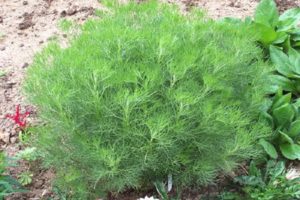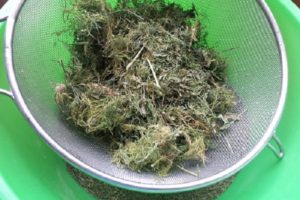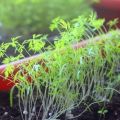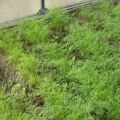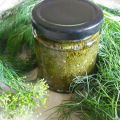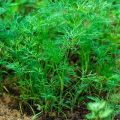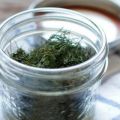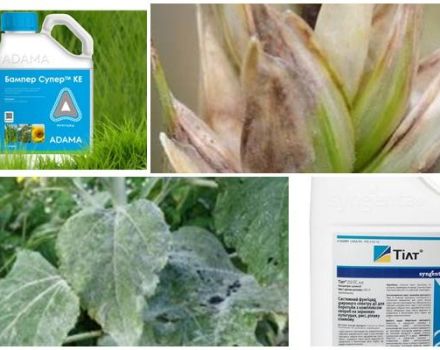How to grow and care for dill in the open field, how many days it will take
Dill was also grown by our grandmothers, as it is an odorous and fragrant greenery, which is valued for its aromatic properties. Also, greens can be considered a real medicine obtained from the garden. Despite the fact that it is planted by gardeners of all countries, not everyone can get green twigs. It happens that dill sprouts do not appear from the ground, and if this happens, they turn out to be thin and have a yellow color. Cultivation of culture has its own secrets.
Content
Types and varieties
It is visually difficult to distinguish one plant variety from another. True professionals will notice the difference between color saturation and the amount of wax coating. Each variety has its own flavor and aroma. Based on these characteristics, a person chooses what he likes best.

Ripening of early maturing varieties occurs 10 days earlier than late maturing. Dill, which belongs to the early varieties, rises 2 weeks earlier, while it has a poor splendor and is less in weight. This crop variety is preferred to be grown under film shelters or in open soil.
The main purpose is to ensure an early harvest of greenery and to obtain planting material for the next season.
Dill varieties late maturing are distinguished by rich foliage and high weight of one plant. If the crop is in a socket state, the harvesting period has come. As a rule, this process continues for two weeks. The Tetra and Kibray varieties are very popular among gardeners.
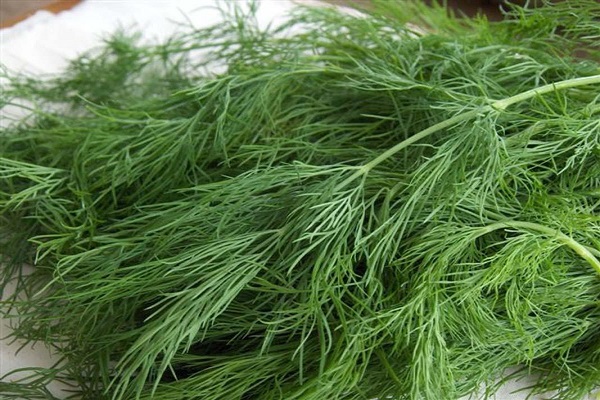
Choosing from the list of late-ripening varieties, gardeners give preference to bush crops. They differ from ordinary dill in the rapid development of the stem. Due to the formation of lateral shoots in the axils, the plant looks like a bush. A person who has chosen varieties such as Salute, Gourmet or Russian size can be sure that dill will grow in the garden.
Late-ripening bush varieties are not suitable for growing in the middle lane. Ripen quickly in the southern regions.
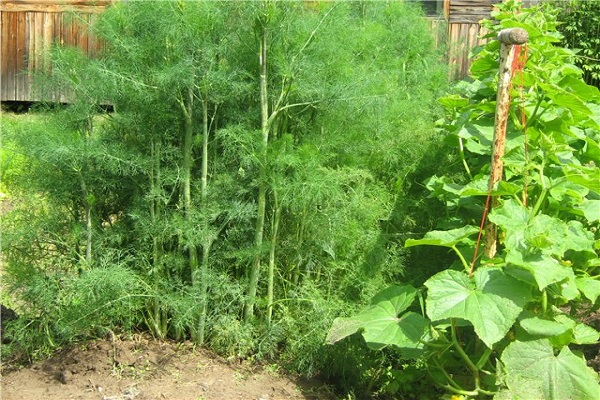
Seed preparation
Before planting in the soil, the seeds undergo a preparation procedure. This is a good method to achieve maximum germination of the planting material. To do this, it is pre-soaked. Take a soft tissue and soak in moisture, after which the seeds of the culture are placed there. Care must be taken to keep them moist and not dry out.
The dill planting material should lie in a wet napkin for at least 2 days in order to have time to swell during this time. If you leave it outdoors for 20 minutes, excess moisture will evaporate from the seeds and they will be ready to plant.The first seedlings of culture, as a rule, appear 10-12 days after sowing. All this time, the soil is kept moist.
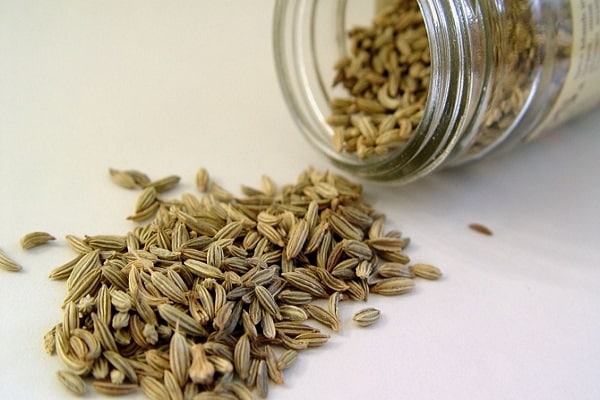
Landing dates
Dill is planted in April. By this time, the snow has disappeared from the beds, opening up direct access to the soil. The seeds of the culture germinate at a temperature of +3 ° C. This also takes into account the weather outside - it should be relatively warm.
To harvest in early spring, planting is carried out at the end of March. For this, the air must warm up well. If you sow dill seeds every 14 days, fresh herbs will grow in the beds. Gardeners who sow dill annually plant the crop at the end of April. In summer, in hot weather, greens also germinate well, but with some care.
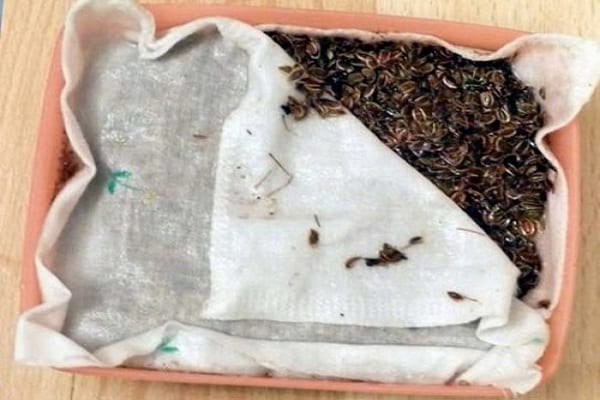
Soil preparation
Dill grows well and develops in open ground conditions. It is desirable that the soil is neutral and loose. If the ground is hard, the gardener can never get the desired result. The soil for planting is prepared in the fall so that it is possible to sow the planting material early.
In winter
So that the seedlings appear as early as possible and there is an opportunity to enjoy fresh herbs, planting is carried out in the winter. The garden bed should contain fertilizers applied in the fall. Seeds are sown before the ground freezes. In this case, the planting material of the culture is laid in the ground deeper than during spring planting. If the area is covered with mulch, the soil is not compacted.
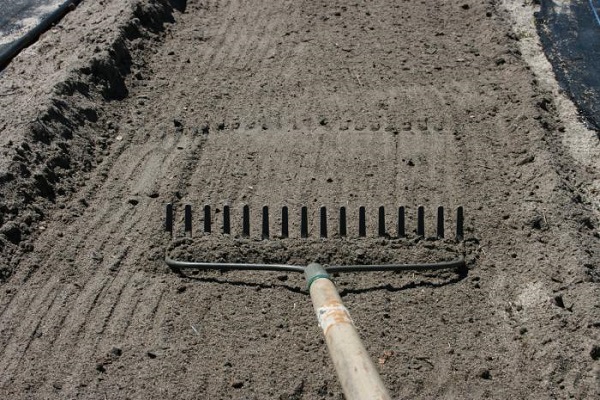
Sowing dill seeds in the country
In the first spring month, humus or compost is introduced into the ground at the rate of 1 bucket per 1 sq. m. As a substitute, you can use complex mineral fertilizers. After good moistening of the soil, seeds are sown in the beds in any way. Top covered with vermicompost, compost or wet peat. Having slightly compacted the sowing, the soil is watered with water from a watering can with a fine strainer so that the moisture can be evenly distributed.
If dill is sown for personal use, use the belt method. The row spacing should not exceed 25-30 cm. To obtain a green mass, the planting material is sown into the soil to a depth of 1.5-2 cm. After that, the soil is rolled up. At a temperature of +3 ° C, the first crop shoots appear. Dill is not afraid of small frosts, so you can safely leave it in the country without supervision.
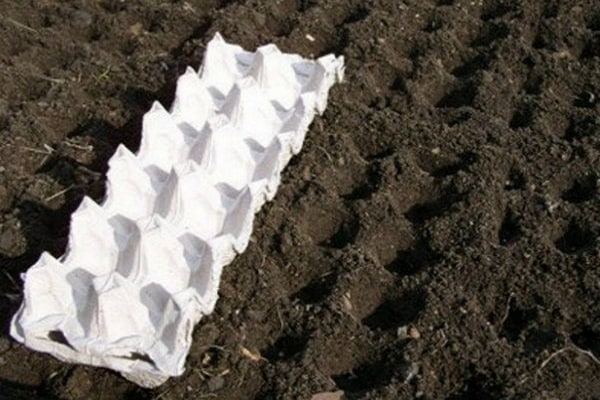
Features of dill care
Dill does not stand out for being exacting and adapts to any soil after planting, so agricultural technology should not cause any particular difficulties. The culture is characterized by the following features:
- Feels great on moist soil.
- It tolerates frost well.
- A large amount of light promotes rapid growth.
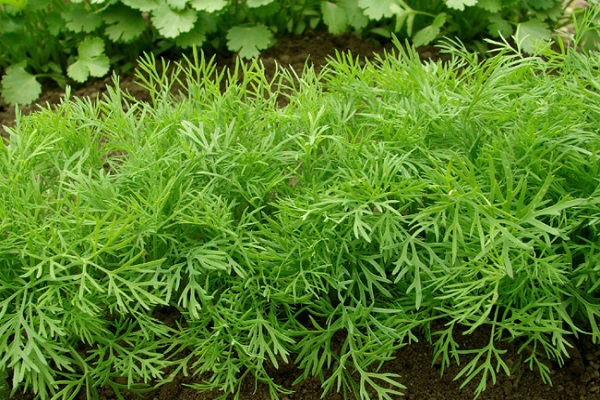
The plant can develop on acidic soils, but the process will be slow. This point should be considered before disembarking. The content of essential oils of the culture prevents the germination of the planting material. If you take into account the above features, a person can easily determine the dill planting site and will know what to look for first.
Lighting and temperature control
The crop beds are placed on the sunny side of the garden. Good predecessors are cabbage or cucumbers. Lack of lighting affects the appearance of the branches, they become thin and weak. If the plot of land is in the shade for most of the day, another place is chosen for dill. This is also one of the important nuances to consider.
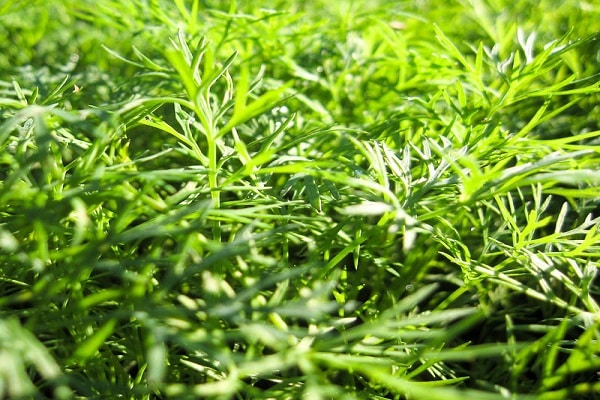
Due attention is also paid to temperature. Cold rainy days are not critical for dill. He perfectly survives any changes in climate and adapts to conditions. But culture can develop fully only in sunny weather.
Watering the plant
According to the cultivation technology, the crop should be watered twice a day - in the morning and in the evening. It is important not to allow waterlogging of the soil.Otherwise, it affects the appearance of the plant. Greens will not grow well, and the branches will take on a yellow or red tint.
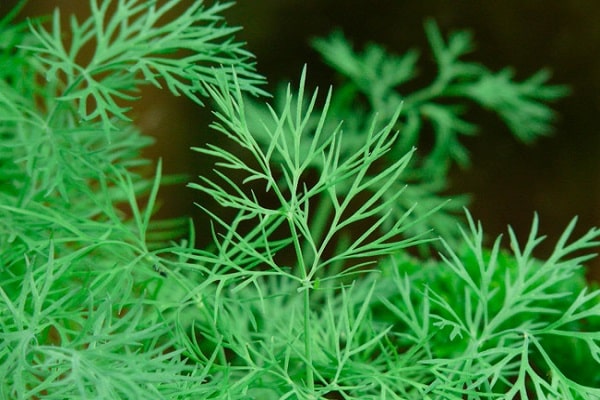
Loosening the soil
During the first 2-3 weeks after planting, the crop grows slowly. At this time, it is important to prevent the formation of a soil crust, if the soil is heavy - monitor this even more carefully. Regular loosening between the grooves contributes to a good dill yield. The procedure is carried out after watering, preventing the formation of a soil crust.
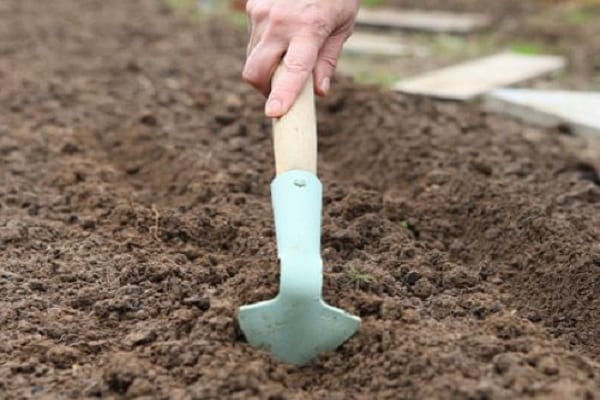
Top dressing
If the crop germinates well, it does not need fertilization. As a rule, this is observed if the soil was initially well filled. With weak growth, the plant should be fed with complex fertilizer. The "Solution" has an excellent effect, only 1 tbsp is taken for a bucket of water. l. substances.
Greens accumulate nitrates if gardeners use sodium or calcium nitrate, as well as urea. Better not to use them.
To accelerate the growth of dill, you cannot use chemicals. As a treatment for greens, weeds and sprouts infected with pests are removed from the garden. With the onset of the new season, you need to change the landing site. If necessary, fertilize the crop and carry out preventive disinfection of the seed.
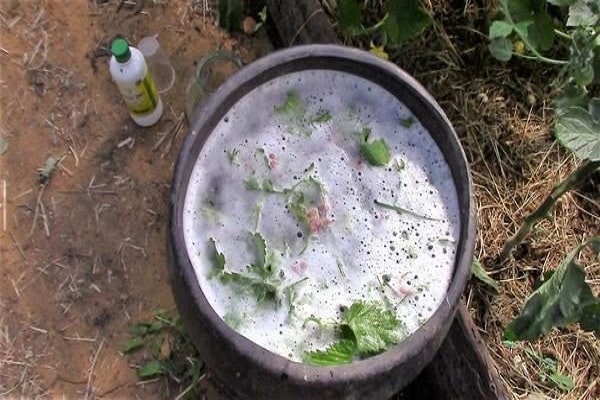
Pests and the fight against them
Most often, the plant is affected by black leg, fusarium wilting and powdery mildew.
Powdery mildew
It is a white bloom that appears on stems, leaves and seeds. After parasitizing powdery mildew, the dill twigs become unsuitable for human consumption. The development of the disease is observed in the second half of summer, especially if the temperature drops at night. It can appear both in open and closed ground. It is prohibited to use chemical preparations for the treatment of culture.
To avoid contamination of the culture with a disease, it is necessary to do prevention. Warm up the collected seeds at a temperature of 50 ° C for at least 30 minutes. Collect planting material only from healthy plants. Before planting dill in a new place, remove the remnants of crops from the last season.
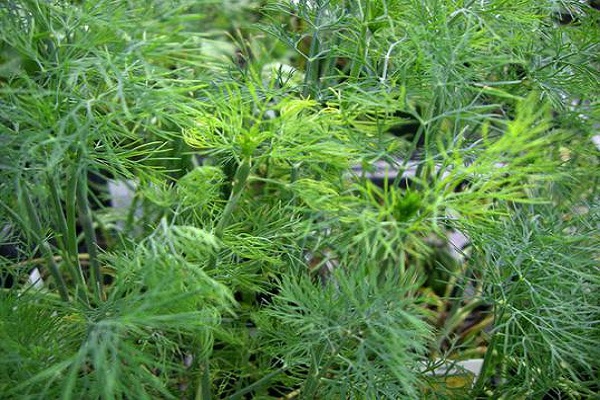
Fusarium wilting
The disease affects the dill leaves that are closest to the ground. They begin to turn red or brown. All branches gradually change color, and the plant withers. The reason for the development is a fungus that gets on the tissues of dill if care technology is not followed.
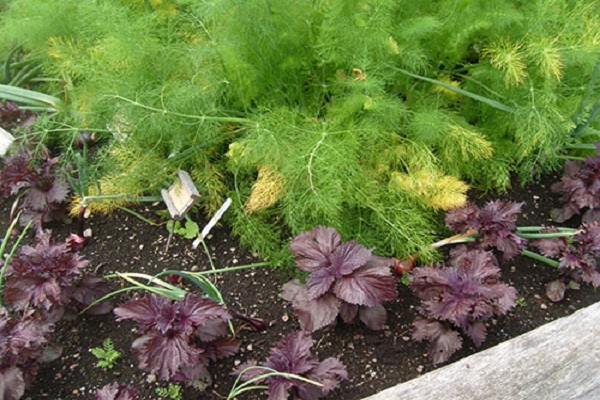
Blackleg
The death of the plant begins after the germination of seeds, since gardeners plant them in the soil already affected. Decay of the root collar changes to the appearance of blackness and weakness of the branches. After that, the entire sprout of culture dries up. The disease spreads even more if the soil is waterlogged. Blackfoot also likes:
- shadow;
- insufficient amount of oxygen in the soil;
- lack of loosening.
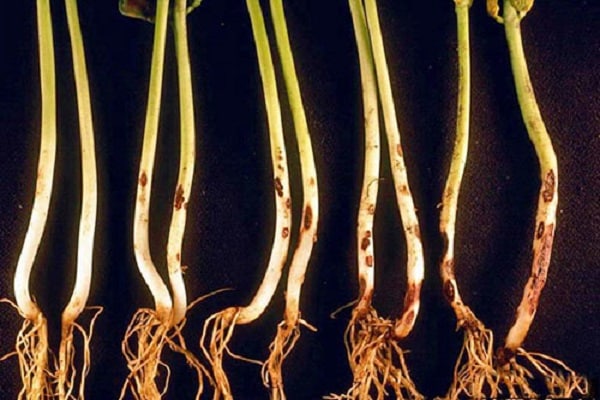
Blackleg can appear on plants that are planted in acidic soil. Its occurrence is also influenced by sudden temperature changes. The culture is affected by the black leg if it is infected with phomosis or cercospora. To avoid diseases, dill do not plant in the same place.
Harvesting and storage
Gardeners begin to receive sprouts of young greenery 35-40 days after planting the seed. Collect dill news in different ways. If some pick off large leaves, others uproot the plant. The most dill is considered usefulwhose height exceeds 5 cm.
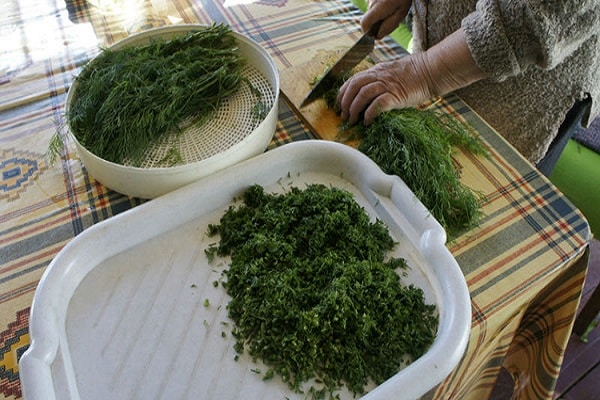
Despite the fact that the germination of the culture is average, after the emergence of shoots, it develops rapidly. If the plant is not disturbed for a long period of time, it will reach a height of 25-30 cm, and sometimes even higher. The greens are harvested before the flowering period, as the taste changes after that.
Harvesting is best done in the morning, when the greens are very juicy.
The yield of dill allows you not only to eat it fresh, but also to dry and freeze it for the winter. At the same time, he does not lose his taste.

